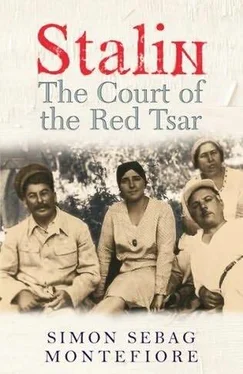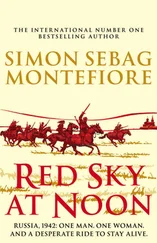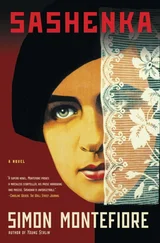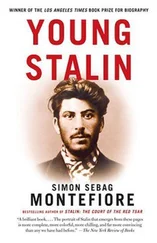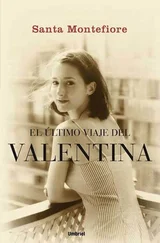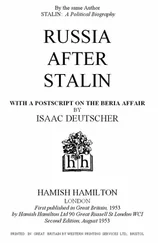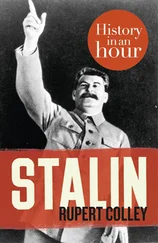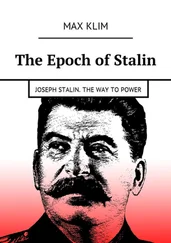The accused were indicted with a fantastical array of often bungled crimes ordered by the shadowy conspiracy led by Trotsky, Zinoviev and Kamenev (“The United Trotskyite-Zinovievite Centre”) that had successfully killed Kirov but repeatedly failed to kill Stalin and the others (though never bothering with Molotov). For six days, they confessed to these crimes with a docility that amazed Western spectators.
The language of these trials was as obscure as hieroglyphics and could only be understood in the Aesopian imagery of the closed Bolshevik universe of conspiracies of evil against good in which “terrorism” simply signified “any doubt about the policies or character of Stalin.” All his political opponents were per se assassins. More than two “terrorists” was a “conspiracy” and, putting together such killers from different factions, created a “Unified Centre” of astonishing global, indeed Blofeldian, reach: this reveals much about Stalin’s internal melodrama as well as about Bolshevik paranoia, formed by decades of underground life. 12
While these crushed men delivered their lines, Procurator-General Vyshinsky brilliantly combined the indignant humbug of a Victorian preacher with the diabolical curses of a witch doctor. Small with “bright black eyes” behind horn-rimmed spectacles, thinning reddish hair, pointed nose, and dapper in “white collar, checked tie, well-cut suit, trimmed grey moustache,” a Western witness thought he resembled “a prosperous stockbroker accustomed to lunching at Simpson’s and playing golf at Sunning-dale.” Born into an affluent, noble Polish family in Odessa, Vyshinsky had once occupied a cell with Stalin with whom he shared hampers from his parents, an investment that may have saved his life. But as an ex-Menshevik, he was absolutely obedient and ravenously bloodthirsty: during the thirties, his notes to Stalin constantly propose shooting of defendants, usually “Trotskyites preparing the death of Stalin,” always ending with the words: “I recommend VMN—death by shooting.”
Vyshinsky, fifty-three, was notoriously unpleasant to his subordinates but cringingly sycophantic to his seniors: he used the word “Illustrious” in his letters to Molotov and even Poskrebyshev (whom he cleverly cultivated). Even his subordinates found him a “sinister figure” who, regardless of his “excellent education,” believed in the essential rule of Stalinist management: “I believe in keeping people on edge,” but he was always on the edge himself, suffering bouts of eczema, living in fear and helping to breed it. Alert, vigorous, vain and intelligent, he impressed Westerners as much as he chilled them with his forensic mannerisms and vicious wit: it was he who later described the Romanians as “not a nation, but a profession.” He was very proud of his notoriety: presented to Princess Margaret in London in 1947, he whispered to the diplomat introducing them, “Please add my former title as Procurator in the famous Moscow trials.” 13
Every day, Yezhov and Kaganovich, who must have been listening to the trial in the “hospitality suite,” reported to Stalin on the proceedings like this: “Zinoviev declared that he confirms the depositions of Bakaiev on the fact that the latter had made a report to Zinoviev on the preparation of a terrorist act against Kirov…” They revelled in recounting to the actor-manager-playwright the successful “unfolding” of this theatrical piece.
However, there was severe doubt among many of the journalists, exacerbated by the NKVD’s comical blunders: the court heard how Trotsky’s son, Sedov, ordered the assassinations in a meeting at the Hotel Bristol in Denmark—yet it emerged that the hotel had been demolished in 1917.
“What the devil did you need the hotel for?” Stalin is said to have shouted. “You ought to have said ‘railway station.’ The station is always there.” 14
This show had a wider cast than the players actually onstage because others were carefully implicated, raising the prospect of other famous “terrorists” appearing in later trials. The defendants took great care to implicate a couple of military commanders and then both Leftists, such as Karl Radek, and Rightists, such as Bukharin, Rykov and Tomsky. Vyshinsky announced that he was opening new cases against these celebrated names.
The members of this off-stage cast performed their roles very differently: the gifted journalist Karl Radek, a famous international revolutionary who cut an absurd figure with his round glasses, whiskers, pipe, leather boots and coats, had been close to Stalin during the early thirties, advising him on German politics. Writers always imagine they can write their way out of danger so Radek offered his pen to the Master. Now Stalin decreed that “although not very convincing, I suggest to delay for the moment the question of Radek’s arrest and to let him publish in Izvestiya a signed article…” Opportunities, even temporary indulgence towards old friends, could change Stalin’s meandering progress. [91] Not all the off-stage cast behaved so conveniently. At 5:46 p.m. on 22 August, Stalin received the following telegram from Kaganovich, Yezhov and Ordzhonikidze: “This morning Tomsky shot himself. He left a letter to you in which he tried to prove his innocence… We have no doubt that Tomsky… knowing that now it is no longer possible to hide his place in the Zinoviev-Trotskyite band had decided to dissemble… by suicide…” As ever, the press release was the most important thing.
On the 22nd, the accused refused to plead for their defence. The Politburo—Kaganovich, Sergo, Voroshilov and Chubar—along with Yezhov, asked for instructions: “It’s not convenient to authorize any appeal,” Stalin retorted, at 11:10 the next night giving exact instructions on the press coverage of the sentences. Revealingly, the playwright thought the verdict required a little bit of “stylistic polishing.” Half an hour later, he wrote again, worrying that the trial would be regarded as just a “ mise-en-scène.” 15
Stalin’s spin doctors engineered public outrage against the terrorists. Khrushchev, rabid supporter of the trials and shootings, arrived one evening at the Central Committee to find Kaganovich and Sergo bullying the poet Demian Bedny to produce a blood-Curdling ditty for Pravda . Bedny recited his effort. There was an awkward pause:
“Not what we had in mind, Comrade Bedny,” said Kaganovich. Sergo lost his temper and shouted at Bedny. Khrushchev glared at him.
“I can’t!” protested Bedny, but he could. His “No Mercy” was published the next day, while Pravda shrieked: “Crush the Loathsome Creatures! The Mad Dogs Must Be Shot!”
In the court, Vyshinsky summed up: “These mad dogs of capitalism tried to tear limb from limb the best of our Soviet land”—Kirov. “I demand that these mad dogs should be shot—every one of them!” The dogs themselves now made their pathetic pleas and confessions. Even seventy years later, they are tragic to read. Kamenev finished his confession but then rose again, obviously off-message, to plead for his children whom he had no other means of addressing: “No matter what my sentence will be, I in advance consider it just. Don’t look back,” he told his sons. “Go forward… Follow Stalin.”
The judges withdrew to consider their pre-decided verdict, returning at two-thirty to sentence all to death, at which one defendant shouted: “Long live the cause of Marx, Engels, Lenin and Stalin!” 16
Back in prison, the scared “terrorists” shakily appealed for mercy, remembering Stalin’s promise to spare them. As Zinoviev and Kamenev waited in their cells, Stalin, waiting in sunny Sochi, received a telegram at 8:48 p.m. from Kaganovich, Sergo, Voroshilov and Yezhov who informed him that the appeal of the defendants had been received. “The Politburo proposed to reject the demands and execute the verdict tonight.” [92] Stalin had just sent Mikoyan on a 12,000-mile tour of the American food industry. The shrewd Armenian made sure Stalin knew that he supported the verdict, writing to “dear Lazar” Kaganovich from Chicago: “Don’t forget to write in your next letter to him that I send my warmest greetings to Our Master. How good that we have so quickly got rid of the Trotskyite gang of Zinoviev and Kamenev!” Mikoyan met Secretary of State Cordell Hull in Washington, D.C., discussed manufacturing with Henry Ford—and inspected Macy’s in New York. The trip had two effects: Mikoyan gave the Russians American hamburgers and ice cream, and he lost his taste for wearing the Party tunic, sporting natty American-style suits for the rest of his career.
Stalin did not answer, perhaps congratulating himself on his imminent revenge, perhaps having dinner, but surely aware that the murder of two of Lenin’s closest comrades marked a giant step towards his next colossal gamble, an intense reign of terror against the Party itself, a slaughter that would consume even his own friends and family. Stalin waited for three long hours. 17
Читать дальше
